Understanding the intricate world of horse behavior is essential for anyone who works with or cares for these majestic animals. It’s particularly important to comprehend what terrifies them and why. Fear is a primal instinct in horses, deeply ingrained in their DNA for survival, and knowing what triggers these fears can be the key to nurturing a calm and trusting equine companion.
What exactly are horses afraid of? Here’s a concise list to shed light on this question:
- Anything new or unusual in their environment
- Invasive veterinary care, grooming, and shoeing
- Traveling in trailers
- Plastic bags and similar objects
- Other animals, especially unfamiliar ones
- Loud noises and sudden movements
Exploring the Depths of Equine Fear
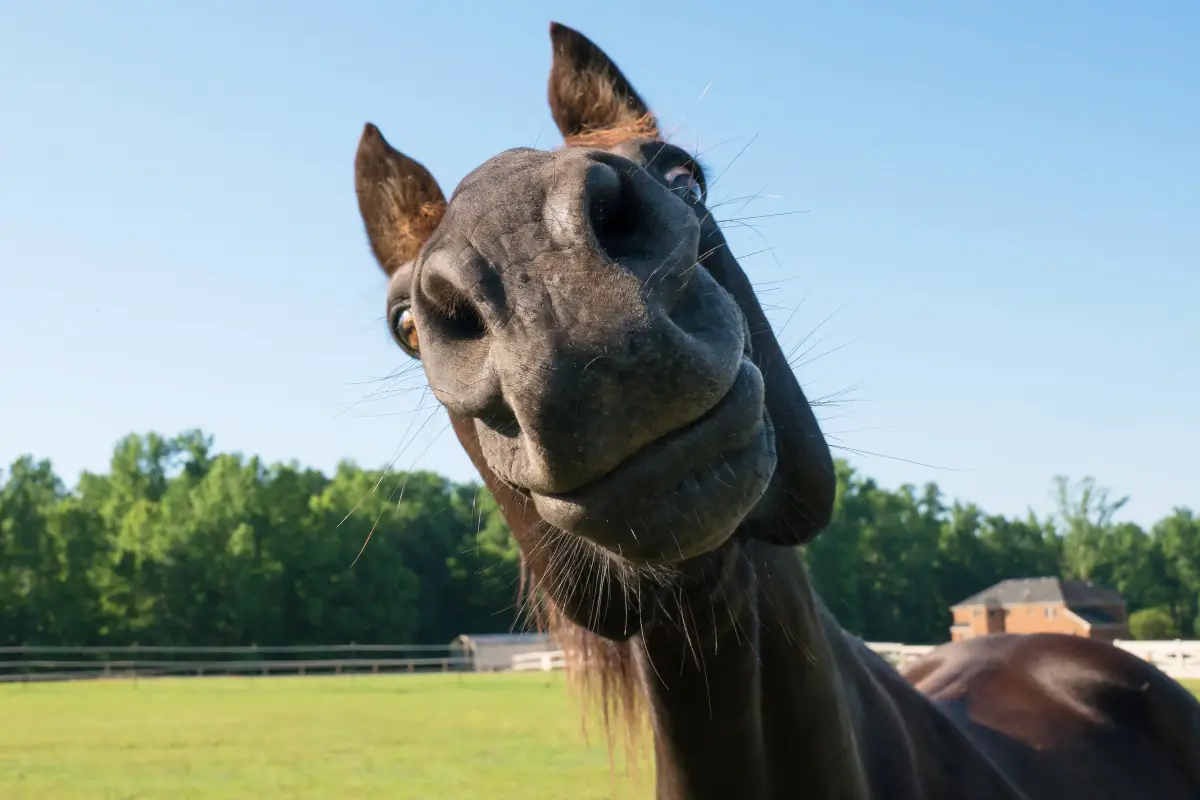
The inner workings of a horse’s mind reveal a realm where fear plays a significant role in behavioral responses. To appreciate the range of emotions horses experience, one must consider each horse’s unique history and personality. This understanding extends to recognizing subtle differences in how individual horses perceive and react to various stimuli.
Individuality in Equine Responses to Fear
As prey animals, horses have evolved with an instinct to flee from danger, yet the intensity of this response can vary among individuals. Selective breeding has accentuated this instinct in some breeds, such as Thoroughbreds and Arabians, who may demonstrate a keener sense of alertness. Additionally, factors like hormonal imbalances and previous negative encounters can contribute to an elevated state of vigilance, manifesting as equine anxiety.
Diverse Fears and Their Origins in Horses
Horses exhibit a spectrum of fears, each with its own set of triggers and severity levels. Among these are:
- Claustrophobia, which can induce panic when confined to small spaces such as trailers or stalls.
- Ailurophobia, a fear of cats that can pose challenges on farms.
- Astraphobia, the fear of thunder and lightning, causing distress during storms.
These phobias may develop from adverse experiences, such as a frightening event in a trailer, leading to claustrophobia. Insufficient exposure to diverse environments during developmental stages can also contribute to entrenched fears. Furthermore, horses can pick up on the emotional states of their handlers, with human anxiety potentially exacerbating a horse’s fear.
Influence of Genetics and Experience on Fear
Both genetic predisposition and past experiences play roles in shaping how a horse reacts to fear-inducing situations. Some bloodlines may naturally be more prone to nervousness, affecting their likelihood of developing phobias. Conversely, negative reinforcement or punitive training methods can instill fear-related behaviors in horses.
Herd Dynamics and Their Impact on Equine Anxiety
In their natural environment, horses depend on their herd for security and social cues when faced with perceived threats. This reliance on group dynamics often extends to their interactions with humans and other horses within domestic settings. Acknowledging the importance of these social bonds is crucial to effectively managing fear responses in horses.
By examining the multifaceted aspects that influence common horse phobias, caregivers can better predict and address their horses’ fears. Accepting the variety of fear triggers and the individuality of each horse’s reaction is instrumental in fostering an environment that caters to their specific emotional needs.
Insights into Equine Behavioral Concerns
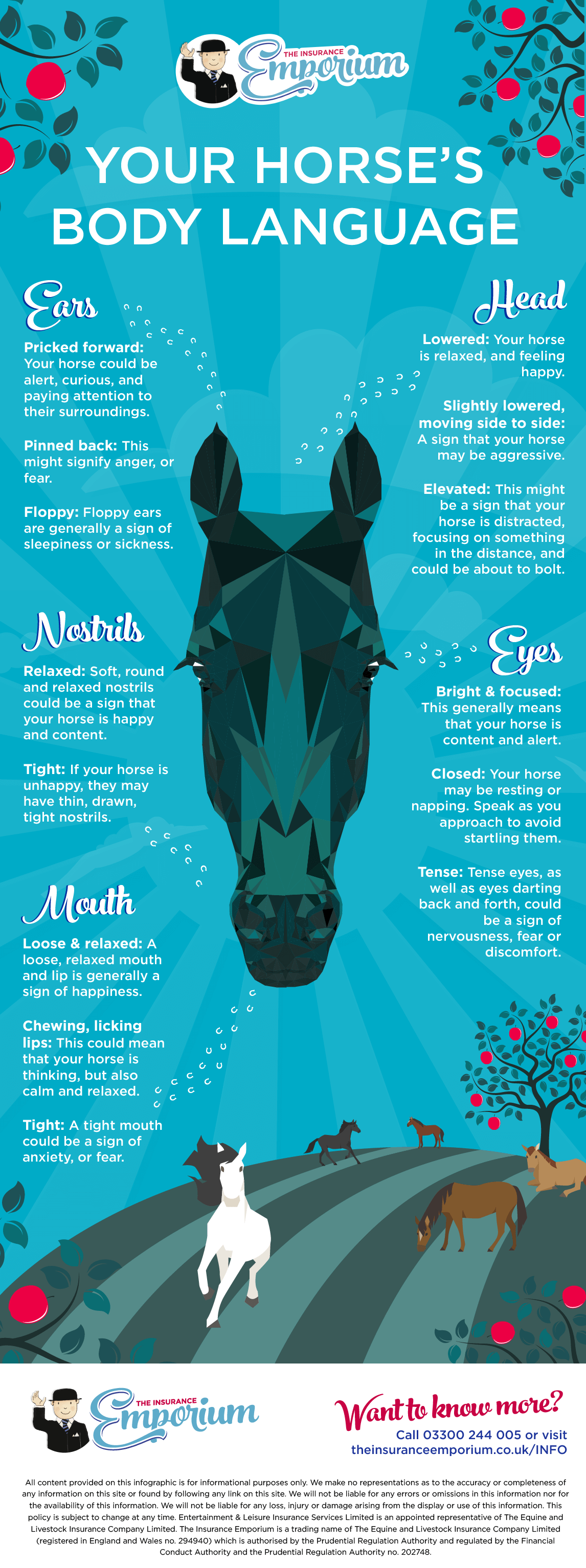
Recognizing the subtle cues of distress in equines is an essential skill for handlers. Horses often communicate discomfort through body language that precedes vocalizations or more visible actions. Dilated eyes with the sclera showing, increased breathing rates, or profuse sweating are some of the indicators of stress in these animals. Early identification of these signs allows for timely interventions to soothe the horse and ensure the safety of everyone involved.
Recognizing and Responding to Equine Stress
When a horse is anxious, physical symptoms can be quite distinctive, such as:
- Accelerated breathing or expanded nostrils
- Excessive vigilance or a high head carriage
- Rigid or hesitant movements
- An elevated heart rate that can be felt upon touch
These involuntary responses signal that a horse is under stress. Addressing these symptoms promptly can prevent the exacerbation of fear.
Understanding Subtle and Overt Fear Behaviors
A horse’s fear can manifest in various behaviors, ranging from subtle to obvious. These may include:
- Reluctance to enter unfamiliar settings or engage with certain objects
- Efforts to flee or avoid uncomfortable situations
- Defensive aggression
- Attention fixated on a specific place or item
Recognizing these actions is crucial for effective interaction with horses, as it helps in pinpointing fear and shaping a suitable response.
Identifying Psychological Indicators of Fear in Horses
Horses may also show psychological indicators of fear, which include:
- Loss of focus on tasks or commands
- Engaging in avoidance tactics
- Developing compulsive habits, such as cribbing or pacing
These signs, if not managed properly, can have lasting effects on a horse’s mental state and training.
Implementing Fear Reduction Techniques
To reduce fear in horses, effective techniques include:
- Meticulous observation to determine their normal behavior patterns
- Educational sessions for handlers on equine body language
- Establishing a nurturing environment to minimize stress
- Regular, peaceful interactions with people and other horses
Adopting these methods can help in crafting a stable and calming environment, which is beneficial in reducing instances of fear-related behaviors in equines.
Advancing Equine Confidence and Trust
Addressing horse fear responses and equine anxiety is a dynamic process that necessitates patience, attention, and a comprehensive knowledge of horse behavior. Through careful observation and interpretation of the varied signs provided by horses, handlers can cultivate a balanced environment that honors the animals’ natural instincts while promoting confidence and trust.
Insights into Equine Behavioral Concerns

Recognizing the subtle cues of distress in equines is an essential skill for handlers. Horses often communicate discomfort through body language that precedes vocalizations or more visible actions. Dilated eyes with the sclera showing, increased breathing rates, or profuse sweating are some of the indicators of stress in these animals. Early identification of these signs allows for timely interventions to soothe the horse and ensure the safety of everyone involved.
Recognizing and Responding to Equine Stress
When a horse is anxious, physical symptoms can be quite distinctive, such as:
- Accelerated breathing or expanded nostrils
- Excessive vigilance or a high head carriage
- Rigid or hesitant movements
- An elevated heart rate that can be felt upon touch
These involuntary responses signal that a horse is under stress. Addressing these symptoms promptly can prevent the exacerbation of fear.
Understanding Subtle and Overt Fear Behaviors
A horse’s fear can manifest in various behaviors, ranging from subtle to obvious. These may include:
- Reluctance to enter unfamiliar settings or engage with certain objects
- Efforts to flee or avoid uncomfortable situations
- Defensive aggression
- Attention fixated on a specific place or item
Recognizing these actions is crucial for effective interaction with horses, as it helps in pinpointing fear and shaping a suitable response.
Identifying Psychological Indicators of Fear in Horses
Horses may also show psychological indicators of fear, which include:
- Loss of focus on tasks or commands
- Engaging in avoidance tactics
- Developing compulsive habits, such as cribbing or pacing
These signs, if not managed properly, can have lasting effects on a horse’s mental state and training.
Implementing Fear Reduction Techniques
To reduce fear in horses, effective techniques include:
- Meticulous observation to determine their normal behavior patterns
- Educational sessions for handlers on equine body language
- Establishing a nurturing environment to minimize stress
- Regular, peaceful interactions with people and other horses
Adopting these methods can help in crafting a stable and calming environment, which is beneficial in reducing instances of fear-related behaviors in equines.
Advancing Equine Confidence and Trust
Addressing horse fear responses and equine anxiety is a dynamic process that necessitates patience, attention, and a comprehensive knowledge of horse behavior. Through careful observation and interpretation of the varied signs provided by horses, handlers can cultivate a balanced environment that honors the animals’ natural instincts while promoting confidence and trust.
Guidance for Soothing and Desensitizing Horses
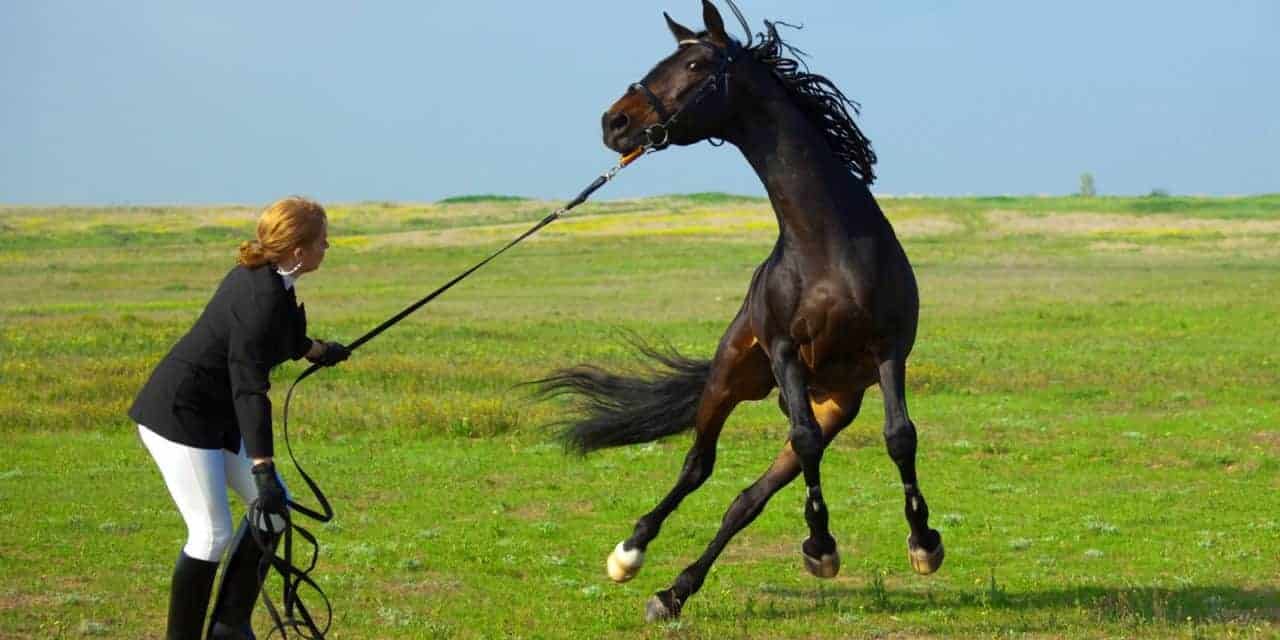
Managing a horse’s fear involves a blend of immediate soothing techniques and long-term desensitization strategies. Initiating a peaceful environment is crucial, using a gentle tone of voice, a composed demeanor, and keeping a safe distance from any stimuli that might provoke anxiety. Additionally, exploring herbal remedies such as chamomile or valerian root can aid in the calming process, yet consultation with a veterinarian is advised before starting any new supplement.
Maintaining a Tranquil Influence
To mitigate a horse’s anxiety, handlers must exude tranquility. Horses are intuitive to their handlers’ emotions, so it’s beneficial to:
- Keep body language relaxed
- Speak in a soft, soothing tone
- Move deliberately without suddenness
- Offer comfort with gentle petting
These techniques can signal to the horse that they are safe, thus reducing their stress.
Implementing Natural Remedies
Behavioral methods alongside natural remedies can effectively manage stress in horses. Viable options include:
- Specialized herbal formulations for equine stress
- Magnesium supplements known to induce calmness
- Lavender and other aromatic essences for a relaxing atmosphere
Such natural remedies should be incorporated thoughtfully within an overall horse care regimen.
Gradual Exposure for Fear Management
Proactively managing equine fears involves a systematic approach to desensitization, which includes:
- Pinpointing the specific anxiety triggers for the horse
- Introducing the horse to these triggers from a non-threatening distance
- Diminishing the distance as the horse’s comfort increases
- Using positive reinforcement to encourage desirable responses
- Continuing the practice until the horse shows no negative reaction
Adaptations to this guide may be needed to suit individual horses.
Positive Reinforcement to Ease Fears
Counter-conditioning complements desensitization by associating a fearful stimulus with a pleasant experience, such as rewarding the horse with a preferred treat when exposed to a grooming tool that causes unease. This strategy gradually builds positive associations.
- Offer the stimulus at a comfortable distance
- Provide valued rewards concurrently
- Reduce the distance as the horse stays relaxed
- Adjust the pace according to the horse’s stress levels
Counter-conditioning takes time but can significantly alter a horse’s response to what previously scared it.
Nurturing a Stable and Supportive Surrounding
A tranquil and supportive habitat is essential for preventing heightened anxiety. This entails:
- Allowing sufficient room for the horse to move and exercise
- Offering a routine for predictability and comfort
- Encouraging social interactions with other horses for a supportive herd structure
- Keeping the stable tidy to reduce the chance of unexpected frights
Such an environment is integral to the horse’s psychological well-being.
Consistency in Training for Confidence Building
Consistent, positive handling fosters trust and helps horses navigate new scenarios with less apprehension. Best practices for positive experiences include:
- Employing reward-based training methods
- Introducing novelties in a gradual, considerate manner
- Spending quality time with the horse beyond formal training
Continuous positive interaction is key to enhancing confidence and assisting horses in dealing with stress effectively.
Guidance for Soothing and Desensitizing Horses
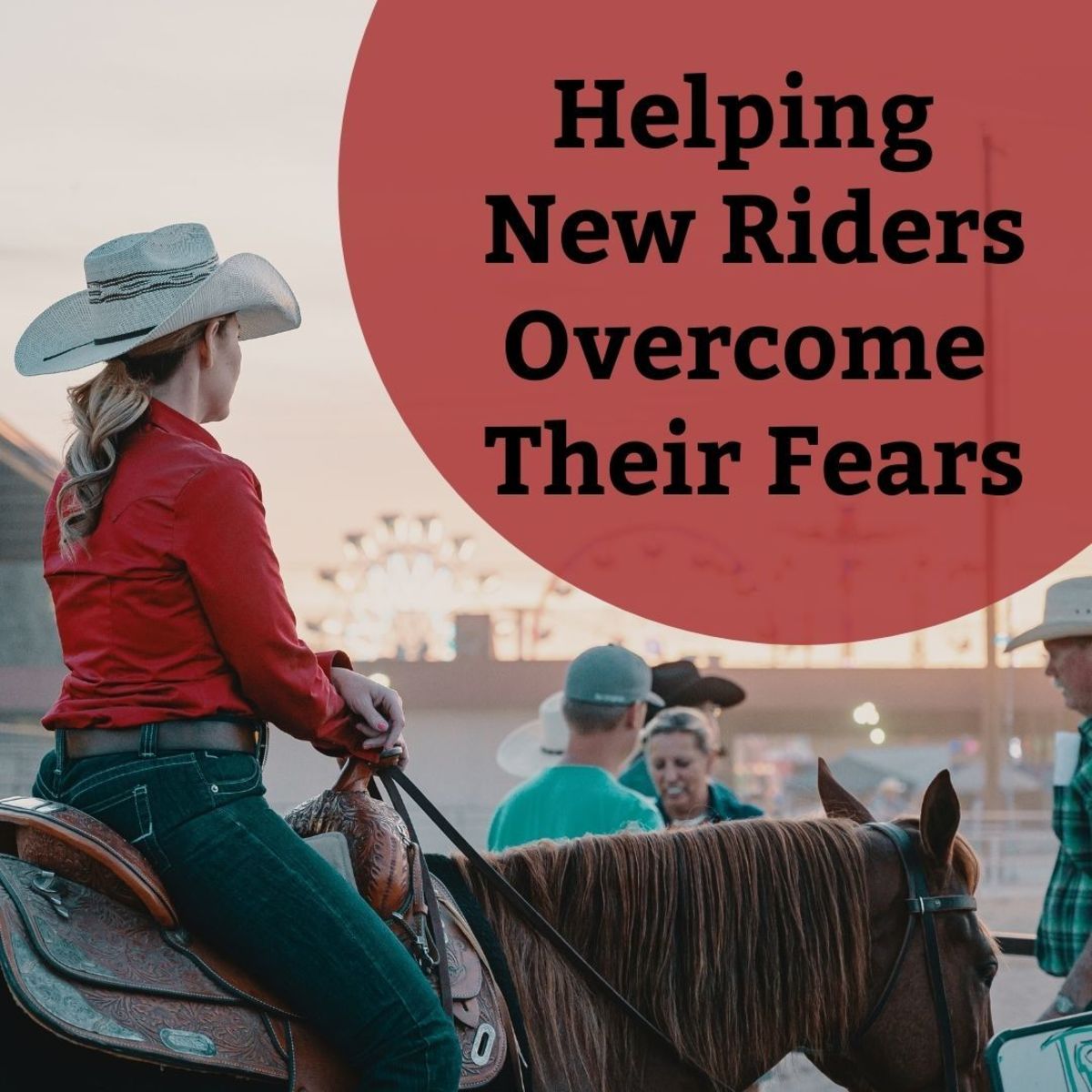
Managing a horse’s fear involves a blend of immediate soothing techniques and long-term desensitization strategies. Initiating a peaceful environment is crucial, using a gentle tone of voice, a composed demeanor, and keeping a safe distance from any stimuli that might provoke anxiety. Additionally, exploring herbal remedies such as chamomile or valerian root can aid in the calming process, yet consultation with a veterinarian is advised before starting any new supplement.
Maintaining a Tranquil Influence
To mitigate a horse’s anxiety, handlers must exude tranquility. Horses are intuitive to their handlers’ emotions, so it’s beneficial to:
- Keep body language relaxed
- Speak in a soft, soothing tone
- Move deliberately without suddenness
- Offer comfort with gentle petting
These techniques can signal to the horse that they are safe, thus reducing their stress.
Implementing Natural Remedies
Behavioral methods alongside natural remedies can effectively manage stress in horses. Viable options include:
- Specialized herbal formulations for equine stress
- Magnesium supplements known to induce calmness
- Lavender and other aromatic essences for a relaxing atmosphere
Such natural remedies should be incorporated thoughtfully within an overall horse care regimen.
Gradual Exposure for Fear Management
Proactively managing equine fears involves a systematic approach to desensitization, which includes:
- Pinpointing the specific anxiety triggers for the horse
- Introducing the horse to these triggers from a non-threatening distance
- Diminishing the distance as the horse’s comfort increases
- Using positive reinforcement to encourage desirable responses
- Continuing the practice until the horse shows no negative reaction
Adaptations to this guide may be needed to suit individual horses.
Positive Reinforcement to Ease Fears
Counter-conditioning complements desensitization by associating a fearful stimulus with a pleasant experience, such as rewarding the horse with a preferred treat when exposed to a grooming tool that causes unease. This strategy gradually builds positive associations.
- Offer the stimulus at a comfortable distance
- Provide valued rewards concurrently
- Reduce the distance as the horse stays relaxed
- Adjust the pace according to the horse’s stress levels
Counter-conditioning takes time but can significantly alter a horse’s response to what previously scared it.
Nurturing a Stable and Supportive Surrounding
A tranquil and supportive habitat is essential for preventing heightened anxiety. This entails:
- Allowing sufficient room for the horse to move and exercise
- Offering a routine for predictability and comfort
- Encouraging social interactions with other horses for a supportive herd structure
- Keeping the stable tidy to reduce the chance of unexpected frights
Such an environment is integral to the horse’s psychological well-being.
Consistency in Training for Confidence Building
Consistent, positive handling fosters trust and helps horses navigate new scenarios with less apprehension. Best practices for positive experiences include:
- Employing reward-based training methods
- Introducing novelties in a gradual, considerate manner
- Spending quality time with the horse beyond formal training
Continuous positive interaction is key to enhancing confidence and assisting horses in dealing with stress effectively.
Building Trust with a Fearful Horse
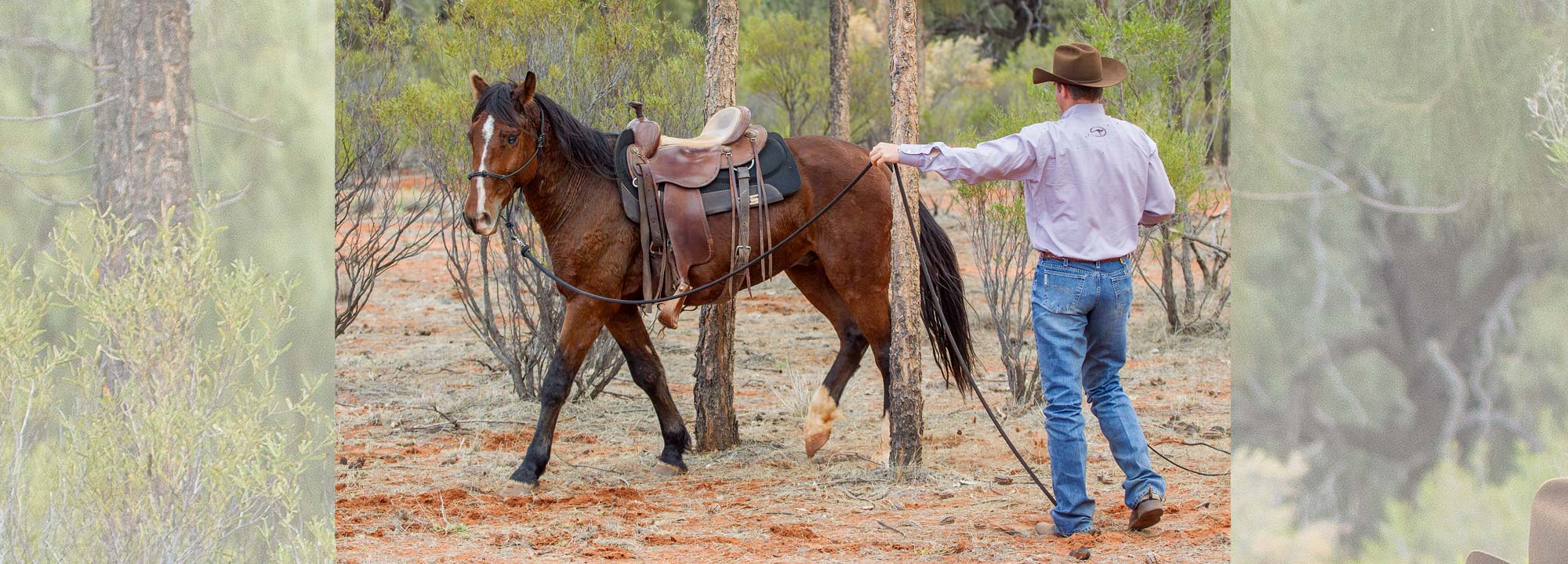
Establishing trust with a fearful horse is an undertaking that requires empathy, time, and an unwavering commitment. Horses, like humans, need to feel secure in their relationships, and this is especially true for those that have been previously traumatized or are naturally skittish. Creating a bond based on mutual respect and understanding is the cornerstone of a harmonious human-equine relationship. To achieve this, one must be attuned to the horse’s needs, exhibiting a demeanor that reassures and comforts the animal.
Approach and Interaction Tips
When seeking to gain the trust of a fearful horse, your approach is pivotal. A calm and measured entrance into the horse’s space communicates respect and non-aggression. Always allow the horse to acknowledge your presence before closing the distance between you, offering them the choice to engage. This non-confrontational method helps in setting a tone of mutual respect from the outset. Employ a consistent routine during interactions to build predictability, which can be soothing for an anxious equine.
- Let the horse come to you when they feel ready
- Use a soft voice to convey calmness
- Avoid direct eye contact as it can be perceived as a challenge
- Observe the horse’s body language to gauge their comfort level
Long-Term Trust-Building Exercises
Developing trust with a horse is not a feat accomplished overnight. It involves a series of intentional, trust-building exercises that gradually instill a sense of security and partnership. Ground work plays a crucial role in this process, focusing on exercises that foster communication and respect. Encouraging a horse to follow you freely, without the aid of a lead rope, is a powerful exercise in trust-building, as it allows the horse to choose to be with you. Sharing calm, quiet moments together can also significantly strengthen your bond, showing the horse that not every interaction involves work or stress.
- Leading and following exercises
- Target training to build confidence and curiosity
- Sharing peaceful moments, like grazing together
- Grooming sessions that reinforce bonding and provide comfort
Patience as the Key to Success
Patience is the most critical element in building trust with a horse. Horses have long memories and a keen sense of intuition. They can detect insincerity and impatience, which may set back the trust-building process. Therefore, it’s essential to give the horse time to process and accept each step of the journey at their own pace. Celebrate the small victories, such as a horse choosing to approach you or remaining calm during a previously stressful situation. These milestones are the building blocks of a relationship based on trust and companionship.
- Allow the horse to set the pace of progress
- Recognize and reward even the smallest signs of trust
- Never rush or force interactions
- Stay consistent in your behavior and routines
Creating a Safe Learning Environment
To cultivate a bond with a fearful horse, it is imperative to create an environment that feels safe and inviting. This means removing potential stressors from the horse’s immediate surroundings and ensuring that their basic needs for food, water, and shelter are consistently met. A horse that feels secure in its environment will be more receptive to human interaction. Additionally, introducing new objects or experiences should be done gradually, allowing the horse to explore and become accustomed to them without pressure.
- Minimize changes in the horse’s environment
- Introduce new experiences slowly and with positive reinforcement
- Ensure the horse’s living conditions are comfortable and stress-free
By integrating these practices into daily interactions, you create a foundation of trust that allows a fearful horse to thrive and develop a strong, confident bond with their human caretakers. Understanding a horse’s fear and working through it with compassion can transform a once-timid animal into a loyal and trusting companion.
Guidance for Soothing and Desensitizing Horses
Managing a horse’s fear involves a blend of immediate soothing techniques and long-term desensitization strategies. Initiating a peaceful environment is crucial, using a gentle tone of voice, a composed demeanor, and keeping a safe distance from any stimuli that might provoke anxiety. Additionally, exploring herbal remedies such as chamomile or valerian root can aid in the calming process, yet consultation with a veterinarian is advised before starting any new supplement.
Maintaining a Tranquil Influence
To mitigate a horse’s anxiety, handlers must exude tranquility. Horses are intuitive to their handlers’ emotions, so it’s beneficial to:
- Keep body language relaxed
- Speak in a soft, soothing tone
- Move deliberately without suddenness
- Offer comfort with gentle petting
These techniques can signal to the horse that they are safe, thus reducing their stress.
Implementing Natural Remedies
Behavioral methods alongside natural remedies can effectively manage stress in horses. Viable options include:
- Specialized herbal formulations for equine stress
- Magnesium supplements known to induce calmness
- Lavender and other aromatic essences for a relaxing atmosphere
Such natural remedies should be incorporated thoughtfully within an overall horse care regimen.
Gradual Exposure for Fear Management
Proactively managing equine fears involves a systematic approach to desensitization, which includes:
- Pinpointing the specific anxiety triggers for the horse
- Introducing the horse to these triggers from a non-threatening distance
- Diminishing the distance as the horse’s comfort increases
- Using positive reinforcement to encourage desirable responses
- Continuing the practice until the horse shows no negative reaction
Adaptations to this guide may be needed to suit individual horses.
Positive Reinforcement to Ease Fears
Counter-conditioning complements desensitization by associating a fearful stimulus with a pleasant experience, such as rewarding the horse with a preferred treat when exposed to a grooming tool that causes unease. This strategy gradually builds positive associations.
- Offer the stimulus at a comfortable distance
- Provide valued rewards concurrently
- Reduce the distance as the horse stays relaxed
- Adjust the pace according to the horse’s stress levels
Counter-conditioning takes time but can significantly alter a horse’s response to what previously scared it.
Nurturing a Stable and Supportive Surrounding
A tranquil and supportive habitat is essential for preventing heightened anxiety. This entails:
- Allowing sufficient room for the horse to move and exercise
- Offering a routine for predictability and comfort
- Encouraging social interactions with other horses for a supportive herd structure
- Keeping the stable tidy to reduce the chance of unexpected frights
Such an environment is integral to the horse’s psychological well-being.
Consistency in Training for Confidence Building
Consistent, positive handling fosters trust and helps horses navigate new scenarios with less apprehension. Best practices for positive experiences include:
- Employing reward-based training methods
- Introducing novelties in a gradual, considerate manner
- Spending quality time with the horse beyond formal training
Continuous positive interaction is key to enhancing confidence and assisting horses in dealing with stress effectively.
If you’re curious about equine behaviors and fears, you might find it interesting to explore not only what horses are afraid of, but also other aspects of their behavior and care. For more detailed insights, take a look at our comprehensive article on the fear of horses, which delves into the common anxieties and phobias horses can experience. Additionally, understanding why horses are shod can provide further context into their care and how it can affect their comfort and performance; read about it in our piece on why horses are shod. Lastly, a horse’s yawning might seem like a simple behavior, but it can be quite complex. Discover the reasons behind this behavior by checking out our article on why horses yawn. Each of these articles offers a fascinating glimpse into the world of horses and their unique characteristics.
Conclusion: Fostering a Fear-Free Environment for Horses
In conclusion, fostering a fear-free environment for horses involves recognizing and respecting their natural instincts, providing them with safety, and nurturing a trusting relationship. By understanding common horse phobias and employing strategies to manage them, we can ensure our equine partners live a comfortable and stress-free life.
To learn more about things horses fear and how to handle them safely, consider exploring resources from reputable veterinary centers.



